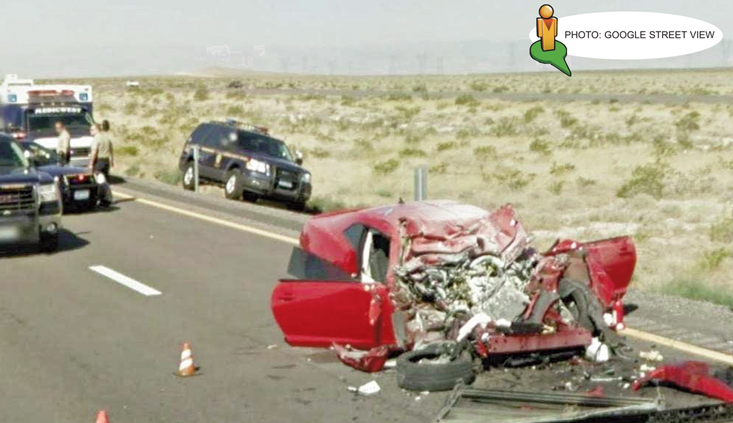Laying the foundation for electronic and documentary evidence at trial
How to authenticate and lay a foundation for the content of writings, videotapes and information from the Web including Google Maps
The proliferation of computers, digital media, and social media is constantly creating new types of evidence available for use at trial. Emails, texts, tweets, status updates, posts and metadata provide potential treasure troves of information, but is it admissible? The evolution of electronic evidence easily outpaces the Legislature’s ability to promulgate rules of evidence to address it. Applying the traditional rules of evidence to new media can be tricky. Before you assume a jury will see the evidence, you need a plan for laying a foundation.
The burden is on you
As the manner by which information is recorded has changed over the years, the law in California has evolved and expanded in an attempt to keep up with the times. Traditionally, a “writing” included handwritten and typed documents. (Evid. Code, § 250.) Over time the definition expanded to include photocopies of those more traditional documents, as well as printouts of emails and Web pages, photographs, videos, and almost any other form of communication or representation. (Evid. Code, § 250.) Electronic evidence can also include voicemails, database materials, and computer metadata.
Most basically, evidence must be relevant (Evid. Code, § 352) and not subject to any exclusionary rule (i.e., hearsay) in order to be admitted. Next comes the issue of authentication. (Evid. Code, § 1401(a).) There is no need to authenticate a writing unless opposing counsel objects to its foundation or authenticity. (Evid. Code, § 353(a).) Authentication is similarly unnecessary if opposing counsel stipulates or admits to the writing’s authenticity. Authentication may also be achieved by judicial notice or a custodian’s affidavit in the case of a nonparty’s business records.
If opposing counsel does object to a writing’s authenticity, the burden of authentication is on you − the proponent of the writing. (Evid. Code, § 403(a).) You have the burden to introduce evidence sufficient to sustain a finding that the writing is what you claim it to be. (Evid. Code, § 1400.) In that way, “[t]he statutory definition ties authentication to relevance.” (People v. Goldsmith (2014) 59 Cal.4th 258, 266.)
While the judge decides whether a party has satisfied their burden, (Evid. Code, § 403(c).), the issue of the authenticity of the document actually becomes a question of fact for the jury to decide. (McAllister v. George (1977) 73 Cal.App.3d 258, 262.) In other words, “[a]s long as the evidence would support a finding of authenticity, the writing is admissible. The fact conflicting inferences can be drawn regarding authenticity goes to the document’s weight as evidence, not its admissibility.” (Jazayeri v. Mao (2009) 174 Cal.App.4th 301, 321.)
Know your purpose
In planning how to authenticate a writing, it is important to be mindful of the reason you want the evidence admitted. The proof that is necessary to authenticate a writing “varies with the nature of the evidence that the [writing] is being offered to prove and with the degree of possibility of error.” (Goldsmith, 59 Cal.4th at p. 267.) When raising an objection to your evidence, your opponent may try to conflate two possible reasons for admission of the evidence, possibly confusing the court before the judge rules on the evidentiary objection. It is critical that you understand why you need the evidence admitted before you begin to argue why the court should rule in your favor.
You do not have to lay the foundation immediately
Even if there is a question as to the writing’s authenticity when you initially proffer it at trial, the judge can still admit the evidence. In such a case, the court can instruct the jury to determine whether the preliminary fact exists, and to disregard the evidence if it finds the preliminary fact does not exist. The court could also instruct the jury to disregard the evidence if the judge later finds that the jury could not reasonably find that the preliminary fact exists. (Evid. Code, § 403(c).)
In Gribaldo, Jacobs, Jones & Associates v. Agrippina Versicherunges A.G. (1970) 3 Cal.3d 443, 446, the court found that, “[t]he procedure of admitting evidence conditionally by either reserving its ruling on the objection or by admitting the evidence subject to a motion to strike is proper where the trial court is not in a position to determine, whether in the light of all the offered evidence, the item objected to will turn out to be admissible.” (Id., 3 Cal.3d at p. 443, FN 6.) Accordingly, if opposing counsel raises an objection to the foundation for the writing, you should argue to have it conditionally admitted. This way, you can show it to the jury and use it in questioning witnesses while presenting additional evidence to support a proper foundation for the writing.
Don’t forget about content
Now that you have authenticated the writing itself, you still need to lay a foundation for the secondary evidence of the content of the writing. (Evid. Code § 1401(b).)
• Traffic Collision Reports
We’ve all been there – an investigating officer does a tremendous job of investigating an incident and preparing the traffic-collision report TCR). You want to show as much of the TCR to the jury as you can, but face a barrage of objections stating that TCRs are not admissible. (Box v. California Date Growers Assn. (1976) 57 Cal.App.3d 267, 270.) First, you may elicit the content of the document by asking the officer detailed questions and offering the report to refresh his or her recollection. Further, the diagram of the collision scene is admissible solely to illustrate the officer’s testimony. (Robinson v. Cable (1961) 55 Cal.2d 425, 429.) Presenting the jury with the traffic-collision report diagram can lend needed credibility to your client’s testimony and also serve as a helpful demonstrative aid to the jury.
• Videotapes, Photographs, and Audio Recordings
Videotapes and photographs of an event or a particular location can also be enormously helpful to a jury. The proponent of the evidence must present evidence, by testimony or some other method, that the video accurately depicts what it purports to show. (People v. Gonzalez (2006) 38 Cal.4th 932, 952.) This can be done by offering a witness who was present at the time the video was made who can testify that it accurately depicts what it purports to show. (People v. Bowley (1963) 59 Cal.2d 855, 859.) However, that is not required, and in reality, you do not have to identify the person who created the video or photograph. (People v. Cheary (1957) 48 Cal.2d 301, 312.) Rather, all that is required is testimony from someone who has “personal knowledge of the matters and circumstances depicted on the videotapes.” (Ashford v. Culver City Unified School District (2005) 130 Cal.App.4th 344, 349 (disapproved on other grounds by Voices of the Wetlands v. State Water Resources Control Bd. (2011) 52 Cal.4th 499).) In other words, witness testimony, circumstantial evidence, content, location, or any other means provided by law can be sufficient. (Goldsmith, at p. 268; People v. Dawkins (2014) 230 Cal.App.4th 991, 1002.)
In People v. Goldsmith, a driver was cited for failing to stop at a red traffic light based on several photographs and a 12-second video recorded by a red light traffic camera. The photographs and video were offered to show that an event occurred at a particular intersection on a particular date and time, namely, that the driver had run the red light. In that way, the photographs and video were offered as substantive evidence of the driver’s violation of the law, not merely as demonstrative evidence of a witness’s testimony, like in the traffic-collision report diagram example mentioned above. An officer testified that the camera system was independently operated, and so the court found that because the system automatically and contemporaneously recorded the images as they occurred, a proper foundation had been laid.
Interestingly, the officer did not testify regarding the records or supervision of third-party maintenance or certification of the equipment. The court found that “no elaborate showing of accuracy is required” and it “decline[d] to require a greater showing of authentication for the admissibility of digital images merely because in theory they can be manipulated.” Notably, the court also found that the photos and video were not hearsay because they were not statement of a person. (Id., at pp. 273-72.)
Printed representations of computer information
While longstanding principles still apply, Evidence Code sections 1552 and 1553 address the issue of printed representations of computer information or programs. These statutes affect how to lay a foundation for writings like printouts of Google Maps images, Facebook pages, or a computer’s internal operations.
A printed representation of computer information, a computer program, or images stored on a video or other digital medium is presumed to be an accurate representation of what it purports to represent. (Evid. Code, §§ 1552, 1553.) These evidentiary presumptions “eliminate the basis for any objection that a printed version of the described writings is not the ‘original’ writing,” and so printouts may be introduced as secondary evidence. (Goldsmith at p. 268.) However, if opposing counsel then produces evidence that a printed representation is inaccurate or unreliable, the burden shifts back to you to prove, by a preponderance of the evidence, that the printed representation is an accurate representation of the existence and content of what it purports to represent. (Evid. Code, §§ 1552, 1553.) There are many compelling ways to use Evidence Code §§ 1552 and 1553 to your advantage at trial, while remembering that the secondary evidence rule does not alleviate your burden to authenticate the writing.
• Satellite Maps and Images
Google Maps and Google Earth provide a number of helpful tools for making a jury more familiar with the geographic area at issue in your trial. Both Google Maps and Google Earth are comprised of overhead satellite imagery and street views of almost every location in the state. Google Maps also allows you to access historical street view imagery, meaning you can print images of a particular road that were created close in time to your incident, for example, even though Google has recorded additional images of it since then. This can be helpful in illustrating how conditions along that road changed over the course of time. Google Earth offers 3D content and ruler and elevation profiles. These tools allow you to measure distances along a path of your choice, or observe the elevation changes in a particular area. Google Earth also offers archival photographs of some sites in larger cities dating back to the 1940’s.
If your opponent objects to the foundation of the printouts, you do not need to subpoena a representative from Google to testify as to their authenticity. Remember to identify the purpose for which you are attempting to admit the printouts. It may be worthwhile to distinguish the use of the printouts as substantive evidence as opposed as an illustrative aid to a witness’s testimony.
Arguably, the images are also admissible as substantive evidence. The court’s reasoning in People v. Goldsmith may be instructive in this situation, meaning, testimony regarding Google’s compilation and maintenance of the images is not necessary given Google’s independent operation of Google Maps and Google Earth, and your opponent’s probable lack of evidence as to Google’s motivation to alter or manipulate the data and images.
• Social Media
Sometimes an opposing party posts information about an incident on their social-networking pages (and regrettably, sometimes our own clients do as well). These posts may be relevant to establish intent, liability, severity of a collision, or the existence of injuries or damages. Printouts from social-media pages can be admissible. As discussed above, Evidence Code sections 1552 and 1553 create a presumption that the printouts are a reliable representation of what was depicted on the computer when it was accessed. However, that does not prove that the content on the social-media page was reliable. You need to offer testimony or other evidence that the content is what you are arguing it to be.
In People v. Beckley (2010) 185 Cal.App.4th 509, 514, a prosecutor attempted to rebut a witness’s testimony that she did not associate with a gang by offering into evidence a photograph taken from the witness’s MySpace page purportedly showing her flashing the gang’s sign. The prosecutor called the detective who accessed the MySpace material as a witness in the case. The detective testified that he downloaded the photograph from the witness’s MySpace page. The defendants conceded that the picture belonged to the witness, but no one was called to testify that it was an accurate depiction of the witness actually flashing the gang sign. Also, no one was called to testify that the photograph was not a composite or had not been faked. The court ruled that such foundational evidence is “critical today to prevent the admission of manipulated images.”
The court in People v. Goldsmith, 59 Cal.4th at p. 272, discussed above, distinguished the foundation required for images recorded by the red-light traffic cameras at issue in that case from the printouts of social-media postings at issue in People v. Beckley. The Goldsmith court explained that the situation in Beckley was distinguishable because, “the issue there concerned the admission of a photograph found on a social-media Website, which presented questions of accuracy and reliability different from the evidence here.” (Ibid.) The court went on to explain that “[t]hese cases serve to demonstrate the need to carefully assess the specific nature of the photographic image being offered into evidence and the purpose for which it is being offered in determining whether the necessary foundation for admission has been met.” (Ibid.)
• Source Code, metadata, and a computer’s internal operations
Metadata is “data about data.” In other words, it includes the information a computer writes into a digital file about who created it, when it was created, who owns it, who altered it, or who accessed it. In the instance of photographs or videos, metadata could include information about exposure and the camera itself, and in the instance of cell phones, could include information about the times of calls, texts messages, or data retrieval. This is separate from more straightforward data retrieval, which addresses retrieving substantive content. Many times, a computer, cell phone, or other device is programmed to record metadata automatically. This information can be valuable at trial as evidence supporting your case.
In People v. Hawkins (2002) 98 Cal.App.4th 1428, 1434, the defendant was charged with taking the source code of his former employer. At issue was the admissibility of a printout of a computer’s recordation of the dates and times certain information was accessed. The court explained that the presumption set forth in Evidence Code section 1552 “operates to establish only that a computer’s print function has worked properly . . . [t]he presumption does not operate to establish the accuracy or reliability of the printed information . . . [U]pon objection, the proponent of the evidence must offer foundational evidence that the computer was operating properly.” (Id. at p.1450.)
The prosecution’s computer investigation expert testified that the source code on the defendant’s computer indicated the dates and times the files had been accessed, and as far as the expert could tell, the computer clock was operating properly when the files were accessed. The defendant did not offer evidence to the contrary, but rather baseless assertions that it was possible that the computer had been tampered with. On that basis, the court ruled that the prosecutor had laid a proper foundation for the source code. The court also ruled the printout of the results of a computer’s internal operations was not hearsay evidence. (Id. at 1449.)
Conclusion
A trial affords many opportunities to impress the jury with electronic and documentary evidence. While traditional rules of evidence apply to authenticating electronic and documentary evidence, further steps are often required to establish the reliability of that evidence.
Shawn McCann

Shawn McCann is a partner at Banafsheh, Danesh & Javid. He graduated from Loyola Law School in 2003. Shawn handles a broad variety of cases regarding personal injury and product liability. He serves on the Board of Governors for Consumer Attorneys Association of Los Angeles and Consumer Attorneys of California and was recently admitted into American Board of Trial Advocates. He currently serves as CAALA President.
Lauren Horwitz

Lauren Horwitz is a trial attorney at BD&J, PC in its wrongful death and catastrophic injury practice group. In addition to advocating for individual plaintiffs, she has experience litigating mass torts and class actions. She also handles bad faith insurance litigation, and has argued before the California Court of Appeal. She is a member of the CAALA Board of Governors and is currently serving as the Chair of the Membership Committee. Lauren is a three-time finalist for CAALA’s Rising Star Award, and she was named a Super Lawyers Rising Star in 2016 - 2020. In 2022, she was named a Super Lawyer.
Copyright ©
2026
by the author.
For reprint permission, contact the publisher: Advocate Magazine

